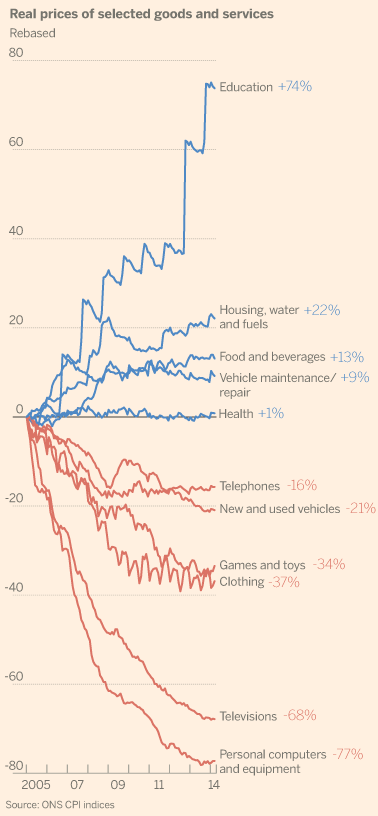Cost of living: UK vs US
kicking_kk
shared this story
from  FT Data: FT Data:
|
The New York Times asked yesterday whether Americans with a car in the driveway, a flat-screen television and a computer with an Internet connection can be described as “poor”.
In the United States, material goods – televisions, computers and cars – are at their most affordable in ten years, all having steadily dropped in price since 2005.
However, the cost of items that have traditionally helped pull Americans out of poverty – education, childcare and healthcare – have become far more expensive. Families’ everyday expenses also remain under strain from a steady increase in the cost of food and little change in the price of housing.
What would the same analysis of the cost of living look like in the UK?
We created a UK version of the chart in the New York Times’ story, using real prices calculated from the British consumer price index. The story was pretty similar:

The most visible change is the rise in the cost of education – which has risen by more proportionally in the UK than in the US.
Education in Britain is 74 per cent more expensive in 2014 than it was nine years ago. The two sudden spikes shown in the chart reflect the increase in maximum university fees to £9,000 per year beginning in 2012, and more universities charging these top-end fees the following year.
Beyond education though, a six-month pattern in the fluctuating price of clothes can also be seen reflecting Christmas and summer sales, while the implementation of Labour’s car scrappage scheme in 2008 precipitated a drop in the price of vehicles. The same year, commodity price spikes also caused a hike in the real price of food and fuel.
It’s worth noting though that the UK definitions of the items included in each category in the basket of goods used to measure inflation differ slightly from their US equivalents – particularly for healthcare and housing.
